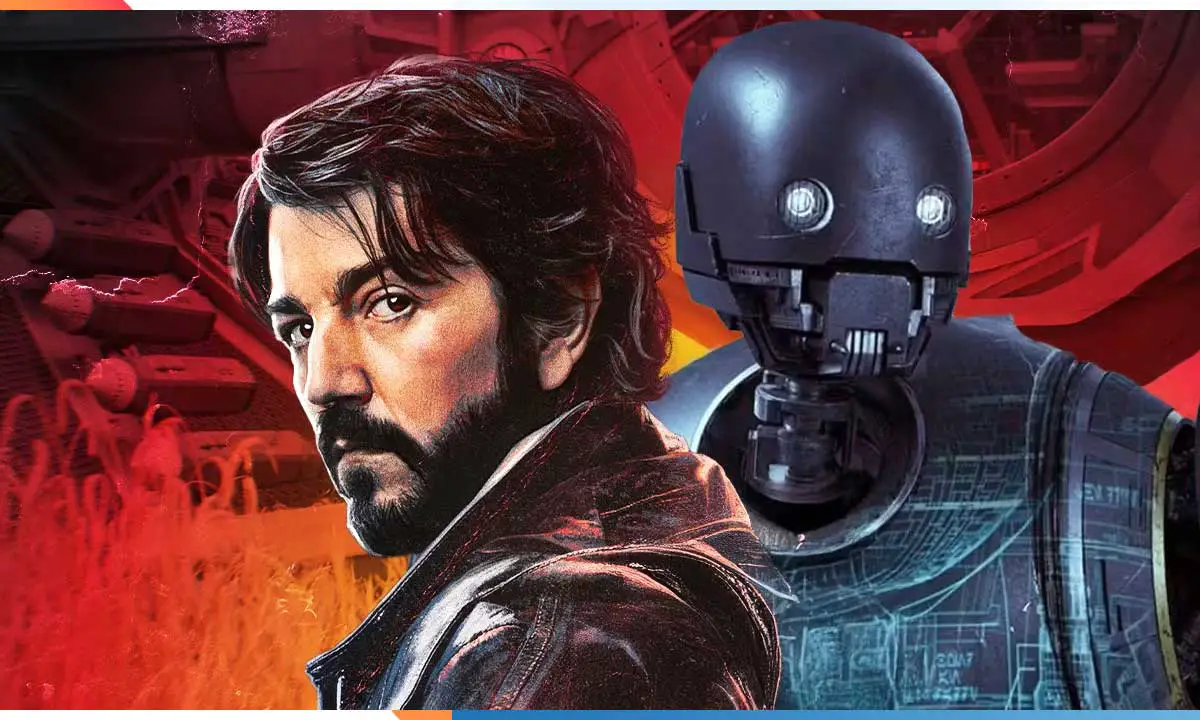When Diego Luna first appeared as Cassian Andor in Rogue One: A Star Wars Story, audiences heard something they’d never encountered before in the galaxy far, far away: a distinct Mexican accent. It wasn’t just a refreshing change from the usual British and American inflections that dominate the franchise — it was quietly revolutionary. And now, with the explosive second season of Andor, that casting choice has evolved into something even more significant: a deeply coded narrative of Latin American identity, resistance, and resilience.
Created by Tony Gilroy and carried by Luna’s magnetic presence, Andor is not just a character study of a rebel. It’s a layered political thriller that draws from real-world histories of authoritarianism, systemic oppression, and revolutionary defiance — many of which echo Latin America’s complex past and present. In doing so, Andor offers one of the most politically potent and culturally resonant entries in the Star Wars canon to date.
Here’s a closer look at how Andor stands as the most Latino-coded tale in the entire Star Wars franchise.
Living Without Papers: The Undocumented Experience on Mina-Rau
In Season 2, Cassian Andor, along with Bix (Adria Arjona), Brasso (Joplin Sibtain), and Wilmon (Muhannad Bhaier), find themselves on Mina-Rau — an agricultural planet offering sanctuary, but with strings attached. They work for a local farmer, surviving off the grid, undocumented, always on edge.
This subplot is strikingly reminiscent of the undocumented laborer experience across Latin America and the U.S. immigrant diaspora. Cassian, once again, becomes a proxy for the invisible workers society relies on but refuses to protect. The show places a particular emphasis on power dynamics when Lt. Krole (Alex Waldmann), an imperial functionary performing a routine crop audit, stumbles upon Bix. With her legal status in question, he sees an opportunity to exploit her, escalating from coercion to attempted sexual violence.
This harrowing sequence speaks volumes about how people without official status are routinely dehumanized. It’s a chilling reflection of how bureaucracies devalue undocumented individuals, often stripping them of legal protection and social empathy. Andor doesn’t flinch in confronting this brutal reality — it mirrors the plight of many Latin American migrants who face systemic abuse in search of survival.
Fear, Paranoia, and the Politics of Disappearance
Following their escape from Mina-Rau, Cassian and Bix attempt to disappear into the urban anonymity of Coruscant. Yet, the tension is palpable. Cassian is hyper-vigilant, nervous in public spaces, distrustful of even the most mundane activities. He’s a man marked by state surveillance, living under the constant threat of detention or worse — a fate familiar to countless Latin Americans living under military rule during the 20th century.
Bix’s trauma is even more acute. Still haunted by her torture at the hands of Dr. Gorst (Joshua James), her visions of him whisper a sinister truth: “His body won’t be found, and his family won’t know what happened to him.” That line is a direct reference to los desaparecidos — the thousands of political dissidents and civilians who were forcibly disappeared during the brutal dictatorships in Argentina, Chile, Brazil, and other nations.
The show’s layered portrayal of fear, silence, and survival mirrors the psychological burden carried by those who’ve lived under oppressive regimes. Andor doesn’t just borrow from history — it reanimates it in space.
The Ghorman Massacre: Star Wars Meets Tlatelolco
In an especially searing sequence titled “Who Are You?”, Andor depicts the Empire’s brutal crackdown on peaceful protestors on the planet Ghorman. What starts as a gathering of song and resistance turns into a massacre. Young Imperial officers — untrained, frightened, and armed — open fire on the civilians. It’s one of the most disturbing scenes in all of Star Wars, not because of its spectacle, but because of its realism.
This fictional atrocity evokes the Tlatelolco massacre of October 2, 1968, when Mexican military forces opened fire on student protestors in Mexico City’s Plaza de las Tres Culturas. Much like Ghorman, Tlatelolco began as a peaceful demonstration and ended in state-sanctioned slaughter — a trauma that still reverberates through Mexican society today.
By grounding the story in recognizable tragedies, Andor humanizes the costs of authoritarian violence and elevates its narrative beyond the usual sci-fi stakes. It asks us to consider the people behind the protest chants and the human toll behind slogans like “The galaxy is watching.”
A Revolutionary Legacy: From Kenari to Ferrix to Yavin IV
Cassian Andor’s evolution from a reluctant survivor to a committed revolutionary is Andor’s emotional and political backbone. His early years on Kenari — a resource-rich, colonized world — foreshadow his lifelong distrust of imperial rule. As he matures, his experiences in Ferrix, a working-class planet resisting slow-burn occupation, and his later missions on Yavin IV position him as a natural insurgent leader.
This transformation carries unmistakable echoes of Latin America’s revolutionary icons. Like Emiliano Zapata, Cassian is deeply connected to land, community, and justice. Like Pancho Villa, he resists being co-opted or controlled by formal structures. But perhaps most powerfully, Cassian shares with these figures a profound resistance to imperial overreach and a commitment to grassroots rebellion.
What makes this resonance even stronger is Diego Luna himself — a Mexican actor whose identity and voice bring unspoken weight to every scene. You don’t need to give Cassian a mustache to see the spirit of a campesino-turned-combatant in his determined gaze. His journey is not just fictional — it’s emblematic of countless Latin American stories of resistance.
‘Andor’ as a Mirror for Today’s Political Climate
Andor works not only because of its gripping narrative and rich characters but because it understands the politics of oppression intimately. Its themes of surveillance, systemic violence, labor exploitation, and forced disappearances aren’t just echoes of the past. They reflect ongoing struggles — in the Americas and beyond.
At a time when marginalized communities are still fighting for basic rights, dignity, and safety, Andor is more than entertainment. It’s a warning and a blueprint. It reminds viewers — especially Latino audiences — that rebellion isn’t just cinematic. It’s historical. And often, it’s necessary.
Cassian Andor may live in a galaxy far, far away, but his story couldn’t be more grounded in the real-world fight for liberation. As Luna’s Andor says early in Season 2: “You’ll never feel right unless you’re doing what you can to stop them. You’re coming home to yourself. You’ve become more than your fear.”
In this way, Andor doesn’t just reimagine the rebellion. It reclaims it — in Spanish, with history on its side.
Source: Original reporting and analysis based on Andor Seasons 1 & 2 and Latin American historical context. Inspired by themes discussed in the Los Angeles Times.
Read Also:

